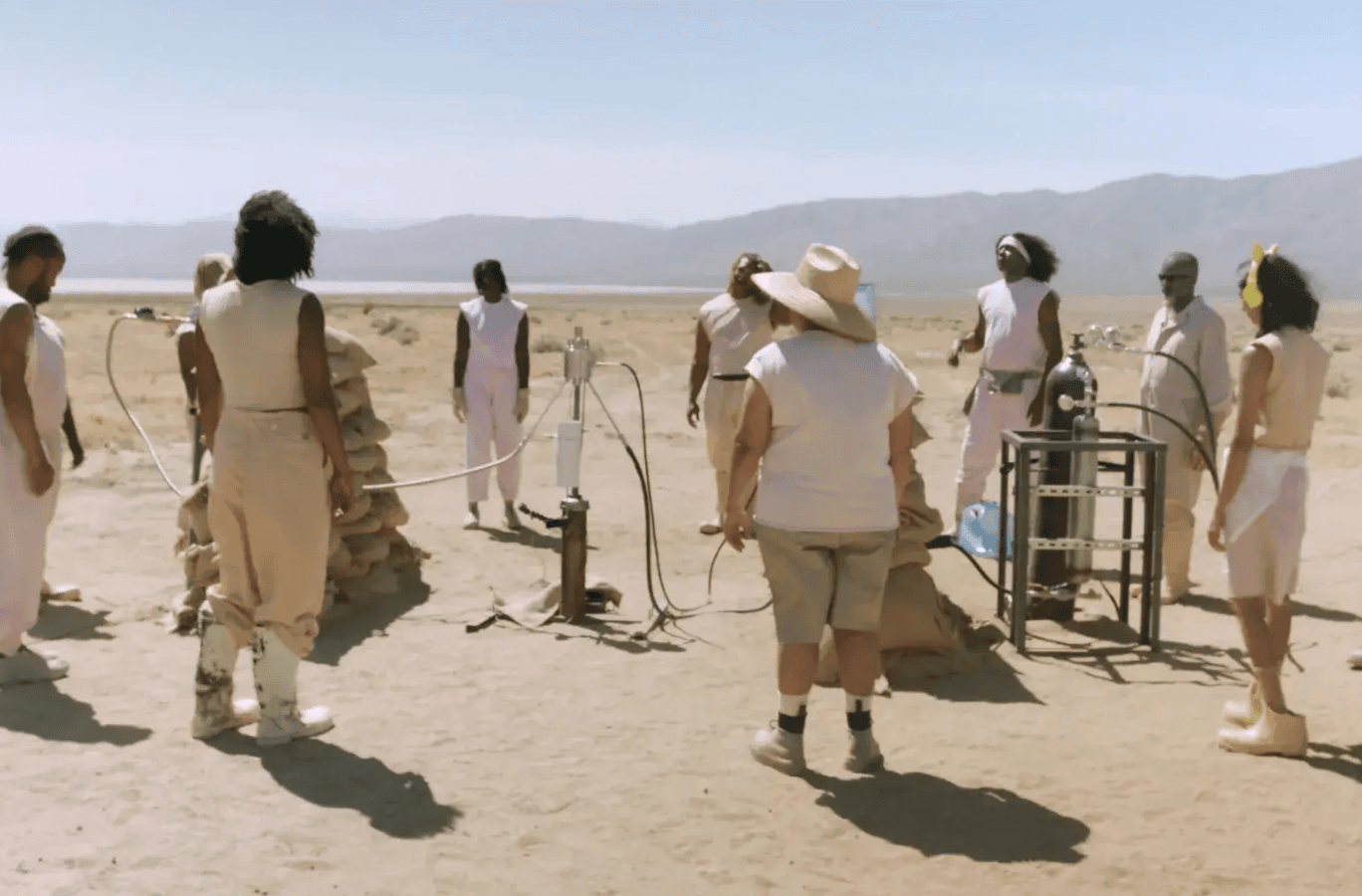Have questions or want to report an issue? Email radar@bostonartreview.com
Through Mar 15, 2026
American Artist: To Acorn
Featured Artists
- American Artist

Since 2013, when they legally changed their name, American Artist has examined the boundaries and fissures of subject production under racial capitalism. Some bodies of work figure antiblackness as the unspoken subtext of the history of computing: Black Gooey Universe (2021), for instance, features smartphones and computers engulfed by asphalt. Other works have engaged themes of surveillance and opacity: 2015 (2019) overlays an urban street with a simulation of predictive policing software, while Security Theater (2023) turned the rotunda of the Solomon R. Guggenheim Museum into a sinister panopticon.
Artist’s recent works have taken inspiration from the speculative fiction of Octavia Butler, particularly her novels Parable of the Sower (1993) and Parable of the Talents (1998). These tales are set in a 2020s California marked by climate crisis and authoritarian politics and are told from the perspective of fifteen-year-old Lauren Oya Olamina, the self-determined young prophet of a religion called Earthseed. Its scripture, titled The Book of the Living, embraces the constancy of change in a radically unstable world: “The only lasting truth / Is Change, God Is Change.”
Artist and Butler attended the same high school in Pasadena, and Artist draws on convergences in their two biographies alongside the resonances of Butler’s fiction in the present. Artist’s recent work also reflects a deep study of Butler’s papers at the Huntington Library in San Marino, California: Some pieces are meticulous graphite tracings of notes and fragments encountered there. These archival moments are balanced with more speculative engagements with the writer’s life and work. In The Monophobic Response (2024), for instance, Artist restaged a 1936 rocket engine test in the desert with a community of Butler enthusiasts, artists, and engineers. Framed by recited passages from The Book of the Living, their performance echoes Earthseed’s dreams of “taking root among the stars.” Artist’s multidisciplinary practice of studying (with) Butler has assembled a vision of Southern California that spans past and future, utopia and cataclysm.